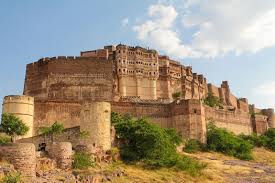The Sacred Path: Exploring Mystical Spaces Around the World

The Significance of Sacred Spaces Around the World
Sacred spaces hold a special place in the hearts and minds of people from various cultures and religions around the world. These places are often revered for their spiritual significance, historical importance, or natural beauty. They serve as centers of worship, meditation, and reflection, drawing pilgrims and visitors seeking solace, enlightenment, or connection to something greater than themselves.
From ancient temples and churches to natural landscapes and modern architectural wonders, sacred spaces come in many forms. Each one carries its own unique aura and symbolism that resonates with those who visit them.
One such example is the majestic Angkor Wat temple complex in Cambodia, a UNESCO World Heritage site known for its stunning architecture and spiritual significance in Hinduism and Buddhism. Pilgrims from around the world flock to this sacred site to marvel at its intricate carvings, towering spires, and serene atmosphere.
In contrast, the serene beauty of Japan’s Mount Koya offers a different kind of sacred experience. This mountain is home to numerous Buddhist temples and monasteries where visitors can participate in meditation retreats, learn about traditional Japanese culture, and immerse themselves in the tranquility of nature.
Whether man-made or naturally occurring, sacred spaces have a way of transcending cultural boundaries and inspiring awe and reverence in all who encounter them. They remind us of our place in the universe and our connection to something greater than ourselves.
As we continue to explore the world’s sacred spaces, let us approach them with humility, respect, and an open heart. For in these hallowed grounds lie not only history and tradition but also a glimpse into the divine mystery that unites us all.
5 Essential Tips for Honoring Sacred Traditions and Places
- Respect sacred places and objects.
- Follow traditions and rituals with reverence.
- Approach sacred matters with humility and an open heart.
- Seek to understand the significance of what is considered sacred.
- Protect and preserve the sanctity of all that is deemed sacred.
Respect sacred places and objects.
It is essential to show reverence and respect towards sacred places and objects. These sites hold deep spiritual significance for many individuals and communities, representing a connection to the divine or the transcendent. By treating these places and objects with care and respect, we honor the beliefs and traditions of others while also fostering a sense of harmony and understanding in our interactions with different cultures and faiths.
Follow traditions and rituals with reverence.
Following traditions and rituals with reverence is a key aspect of honoring the sacred. By approaching these practices with respect and mindfulness, we not only pay homage to the cultural and spiritual significance they hold but also deepen our connection to the sacred essence they embody. Whether it involves participating in ceremonial rites, observing sacred customs, or engaging in spiritual rituals, embracing tradition with reverence allows us to tap into a timeless wisdom that transcends individual beliefs and unites us with something greater than ourselves.
Approach sacred matters with humility and an open heart.
Approaching sacred matters with humility and an open heart allows us to truly appreciate the depth and significance of these experiences. By setting aside our preconceptions and ego, we create space for genuine connection, understanding, and reverence. This mindset enables us to engage with sacred spaces, traditions, and beliefs in a respectful and meaningful way, fostering a sense of unity and spiritual growth within ourselves and with others.
Seek to understand the significance of what is considered sacred.
Seeking to understand the significance of what is considered sacred is essential in fostering respect and appreciation for different cultures and beliefs. By delving into the history, traditions, and symbolism behind sacred places and practices, we can gain valuable insights into the values and spirituality of others. This act of seeking understanding not only broadens our knowledge but also promotes empathy and cultural sensitivity, leading to a deeper connection with the diverse tapestry of human experiences across the globe.
Protect and preserve the sanctity of all that is deemed sacred.
It is essential to protect and preserve the sanctity of all that is deemed sacred. By honoring and respecting these special places, objects, or traditions, we show our appreciation for the spiritual significance they hold. Through our actions and attitudes, we can ensure that these sacred elements continue to inspire and uplift individuals for generations to come.



